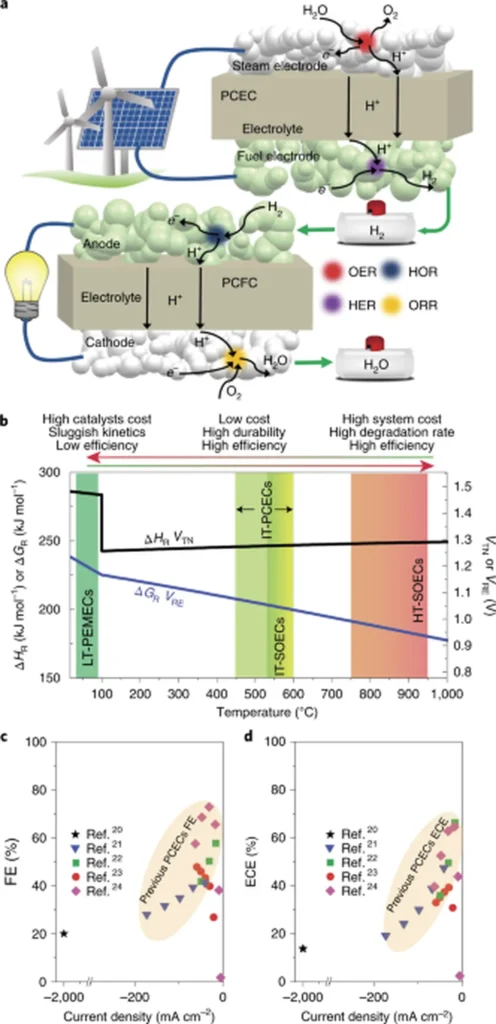In the quest for more efficient and cost-effective energy technologies, researchers from the University of Wisconsin-Madison, led by Professor Dane Morgan, have been investigating ways to improve proton ceramic fuel cells (PCFCs). These fuel cells offer high efficiency at lower operating temperatures, but their performance is often hampered by slow oxygen reduction reactions at the cathode. The team’s recent study, published in the Journal of Materials Chemistry A, explores the impact of yttrium (Y) doping on oxygen conductivity in a specific family of cathode materials, aiming to shed light on how to optimize these components for better PCFC performance.
The researchers focused on the BaCoFeZrY (BCFZY) perovskite family, a promising triple-conducting air-electrode material. The study examined three compositions: BCFZ, BCFZY0.1, and BCFY, to understand how varying the amount of Y doping affects oxygen transport. Oxygen conductivity was evaluated by considering both oxygen tracer diffusivity and oxygen defect concentration. The team used advanced computational methods, specifically ab initio molecular dynamics simulations, to determine tracer diffusivity and migration energies, while defect concentrations were estimated from reference data.
The findings revealed that Y doping slightly decreases oxygen conductivity from BCFZ to BCFZY0.1, with conductivities of 337 mS/cm and 203 mS/cm at 500°C, respectively. The activation energies for these compositions were 0.155 eV and 0.172 eV. The BCFY composition, which has the highest Y content, showed much lower conductivity (99 mS/cm) and a higher activation energy of 0.261 eV. Notably, the computed conductivities were higher and more Arrhenius-like than experimental values, suggesting that microstructural features such as grain boundaries significantly limit oxygen transport in real materials.
To better understand the discrepancy between computed and experimental values, the researchers developed a series-circuit model that combines bulk conductivity with fitted grain-boundary parameters. This model provided semi-quantitative agreement with experimental data, highlighting the importance of considering both bulk and grain-boundary effects in optimizing cathode performance.
The practical implications of this research for the energy sector are significant. By clarifying the role of Y doping in oxygen transport, the study provides valuable insights for developing more efficient cathode materials for PCFCs. Improved cathode performance can lead to more efficient fuel cells, which in turn can contribute to a more sustainable energy future. The findings also underscore the importance of considering microstructural features in the design and optimization of energy materials, paving the way for further advancements in this critical area of research.
Source: Kim, C., Jacobs, R., Duffy, J. H., Brinkman, K. S., Abernathy, H. W., & Morgan, D. (2023). Effects of Yttrium Doping on Oxygen Conductivity in Ba(Fe, Co, Zr, Y)O3-δ Cathode Materials for Proton Ceramic Fuel Cells. Journal of Materials Chemistry A.
This article is based on research available at arXiv.

